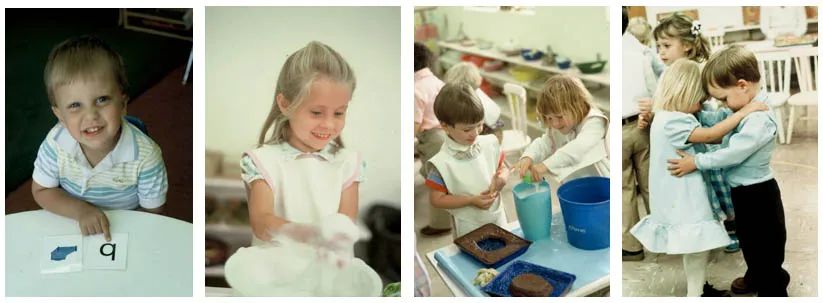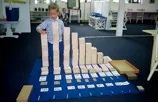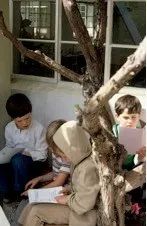Spontaneous Joy in Children
Montessori children tend to like school. Many of them love school. When you think of school what the first words that come to your mind? Is it fun? Is it spontaneity? Is it joy? Is it creativity?
If these words are not of your list, why aren’t they? They can be! In Montessori classrooms around the world, spontaneity, creativity and joy are the words that children and teachers and parents think of when they think of school.
Just look at these children….

They are having fun. They are spontaneously joyful. They are learning and they are content. They are also focused and orderly.
The fruits of meeting the developmental needs of children in a free and orderly environment are joy. Every child has an inner teacher driving him in his development, picking from the environment those activities that allow him to grow. When the environment is rich is these motives of activity and the child is lovingly introduced to them and allowed to move freely to select what he needs, you see a transformation that leads to joy.
Joy comes from inside the child. Teachers cannot force their children to experience joy and more than they can command them to learn. They can create experiences where these things spontaneously happen. That is exactly what good Montessori schools and homes do. They facilitate the child’s finding happiness in his own growth. Montessori points out that the work of the child is his own development. We work for external goals – to get the job done. But the child works for his own internal satisfaction. His own development is a source of great joy and happiness.
Joy is not always a bubbling over in laughter. It is often calm and serene. It is busy and natural where children are free to move about and talk to one another, a place where community flourishes along with individual learning.
Freedom to express your interests, to explore what catches your fancy, to learn through your hands in interesting, multi-sensory ways… these are things that make children happy. Stop and think for a moment. Learning is to brain like breathing is to the lungs, like beating is to the heart. It is an artificial arrangement unsuited to the minds of children if they are bored.

Can you imagine a better way to learn about the fundamentals of the number system that this brilliant set of materials from the mind of Maria Montessori? There are single beads for units, bars of ten beads for tens, squares of 100 beads for hundreds, and cubes of 1,000 beads for thousands. The material is simple, elegant and very interesting to build. Montessori originally designed it for six- and seven-year-olds, but it was the fours and fives who flocked to it. It gave the younger children great joy to be able to work with such big numbers. It was their spontaneous interest that led Montessori to make these materials available to the ages for which it means the most.
Who would imagine that a group of five-year-old boys would prefer to read that go out to play? Perhaps we underestimate the children in our midst. As we have said in this series of articles, children who are free to choose their work and who are developing in sync with their inner teacher are happy children. They become normalized through the very process of their work. In whatever form it takes, concentrated work is the key to a child’s joy in school.
out to play? Perhaps we underestimate the children in our midst. As we have said in this series of articles, children who are free to choose their work and who are developing in sync with their inner teacher are happy children. They become normalized through the very process of their work. In whatever form it takes, concentrated work is the key to a child’s joy in school.

We as a society are not well educated to understand the needs of our children. Our adult needs generally take precedence. The more we understand the needs of children at each stage of development, the better we can make certain those needs are met. We can learn how to provide an appropriate environment and allow children freedom to express their own interests at their own rates of development. We will find happier, more peaceful children.
We invite you to delve deeper into the work of Maria Montessori and our offerings here at Age of Montessori. We know it changes lives. We have seen how a well prepared Montessori teacher and environment can enhance joy, creativity and peacefulness in the lives of both children and their teachers. You deserve it. The children whose lives you touch deserve it.




















